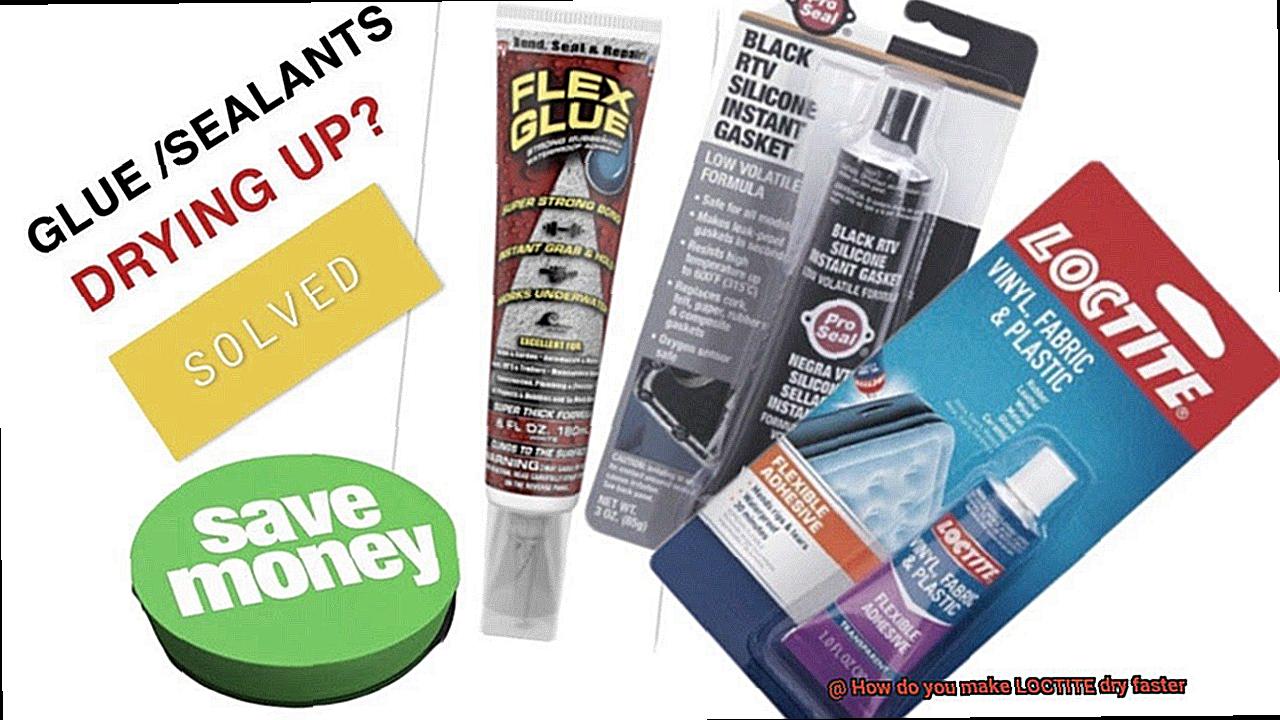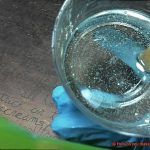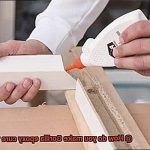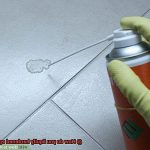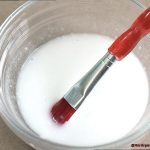LOCTITE adhesives are a DIYer’s best friend when it comes to fixing and bonding materials. But let’s face it, waiting for them to dry can sometimes feel like watching paint dry – slow and agonizing. Whether you’re in a hurry or just impatient like me, I’ve got some tricks up my sleeve to help you speed up the drying process.
In this blog post, we’ll dive into practical tips and techniques that will have your LOCTITE adhesive drying faster than ever. These methods are easy to implement and won’t compromise the bond’s quality, so you can save time without sacrificing results. So, let’s get started on making LOCTITE dry faster with these effective hacks.
But hey, before we jump right in, it’s important to remember that these tips are more general in nature and may not apply to every LOCTITE product out there. Different formulations have their own curing times and requirements, so always check the product’s datasheet and instructions for the best results. Now, without further ado, let’s explore these game-changing techniques that will have your LOCTITE drying in no time.
Factors Affecting the Drying Time of LOCTITE
Contents
- 1 Factors Affecting the Drying Time of LOCTITE
- 2 Applying Heat to Speed Up the Drying Time
- 3 Using Accelerators or Activators
- 4 Proper Surface Preparation for Faster Drying
- 5 Reducing Humidity Levels for Quicker Drying
- 6 Choosing the Right Type of LOCTITE Adhesive
- 7 Tips and Tricks for Speeding Up the Drying Time of LOCTITE
- 8 Conclusion
LOCTITE adhesives are renowned for their strong bonding capabilities, but sometimes we need them to dry faster to meet project deadlines or reduce downtime. In this blog post, we will explore the factors that affect the drying time of LOCTITE adhesives and share some tips and techniques to expedite the process.
Factors Affecting Drying Time:
- Temperature: Higher temperatures ignite a fiery speed in LOCTITE’s curing process, while lower temperatures slow it down to a crawl. Make sure the ambient temperature falls within the recommended range mentioned on the packaging for optimal drying time.
- Humidity: High humidity dampens the drying process, as solvent evaporation and moisture absorption take a leisurely stroll. Work in a well-ventilated area with controlled humidity levels to achieve faster drying.
- Substrate Material: Porous materials greedily soak up more adhesive, extending drying time like a luxurious soak in a bubble bath. Non-porous materials like metals or plastics dry faster, thanks to their resistance to absorption. Rough or uneven surfaces offer more contact points for adhesion, leading to quicker drying.
- Thickness of Adhesive Layer: Thick layers play hard to get, taking longer to dry as they bask in the glory of their solvents. Follow the recommended application guidelines for optimal adhesive thickness and avoid drowning your project in excess glue.
- Curing Method: LOCTITE offers various products with different curing options such as air-drying, anaerobic curing, heat curing, or UV light curing. Each method has its own specified timeframe for achieving full cure and should be followed accordingly.
Tips and Techniques for Faster Drying:
- Apply Heat: Ignite the drying process by heating the adhesive using a heat gun or gently placing bonded objects in a low-temperature oven. Just be sure to follow the manufacturer’s guidelines to prevent material damage.
- Use Accelerators or Activators: Speed things up with accelerators or activators that ignite cross-linking reactions between adhesive molecules, turbocharging the drying and bonding process. Apply accelerators directly onto surfaces or mix activators with the adhesive for a quick fix.
- Proper Surface Preparation: Prepare your surfaces like a surgeon prepping for surgery. Clean, dry, and contaminant-free surfaces ensure optimal adhesion and faster drying. Use suitable solvents or cleaners to remove impurities before applying LOCTITE.
- Reduce Humidity: Cut through the muggy air by employing dehumidifiers or working in well-ventilated areas. Create a drier environment, facilitating faster drying and curing.
- Choose Fast-Drying Formulations: Don’t settle for slowpokes when you can have sprinters. Different LOCTITE products have varying drying times, so select adhesives specifically formulated for fast drying to reduce overall drying time.
Applying Heat to Speed Up the Drying Time
Well, we have just the solution for you. By harnessing the power of heat, you can expedite the drying time of your adhesive and swiftly resume your project. However, before you embark on this heated journey, there are a few crucial factors to consider.
Let’s begin by delving into the science behind how heat facilitates faster drying. When heat is applied to LOCTITE glue, it unleashes a whirlwind of activity within the molecular realm. The temperature increase boosts the kinetic energy of the molecules, propelling them into a frantic dance that accelerates the chemical reaction responsible for drying. Consequently, your glue will cure at an accelerated pace, allowing you to proceed with your project in record time.
Now, let’s explore the various methods available for applying heat to your LOCTITE glue. One option is to employ a trusty heat gun. This nifty device emits a stream of hot air onto the surface where the glue has been applied, facilitating the evaporation of solvents and hastening the drying process. However, caution must be exercised as excessive heat can inflict damage upon certain materials or even ignite flammable substances.
Alternatively, you can opt for a hairdryer to expedite the drying time. Similar to a heat gun, a hairdryer also blows hot air onto the glued surface, stimulating rapid curing. As hairdryers are generally less powerful than heat guns, they provide a safer alternative for delicate materials. Nonetheless, it’s important to note that using a hairdryer may result in slightly longer drying times compared to a heat gun.
Now comes the moment for cautionary advice. While applying heat undoubtedly expedites LOCTITE glue’s drying time, it’s imperative to exercise prudence. Excessive heat can compromise the adhesive properties of the glue, leading to weaker bonds and potential failure. Striking the perfect balance between accelerating drying time and maintaining optimal strength and durability is paramount.
It’s essential to mention that employing an oven or a microwave to apply heat is feasible but incredibly risky. These appliances can generate excessive heat, posing potential fire hazards and damage risks. Always adhere to the manufacturer’s recommendations and safety guidelines when attempting to expedite glue drying using these methods.
Using Accelerators or Activators
When it comes to adhesive applications, time is a valuable resource. Waiting for glue to dry can be frustrating, but fear not. Accelerators and activators are the secret weapons that can dramatically speed up the curing and drying process of LOCTITE adhesives, ensuring faster and stronger bonds. In this article, we will delve into the world of accelerators and activators, exploring their benefits and how they can revolutionize your adhesive projects.
Accelerators:
Among the most commonly used accelerators in conjunction with LOCTITE adhesives is the cyanoacrylate accelerator. This remarkable substance promotes cross-linking of adhesive molecules, facilitating rapid curing and bonding. Specially formulated to complement cyanoacrylate adhesives like LOCTITE, these accelerators guarantee optimal compatibility and performance.
Activators:
For anaerobic adhesives such as threadlockers and pipe sealants, activators play a vital role in initiating the curing process. These adhesives require an oxygen-free environment to cure effectively. Activators create this environment by reacting with metal ions or moisture present on the bonding surfaces, triggering the curing process and providing a robust and dependable bond.
Application:
Using accelerators or activators with LOCTITE adhesives is a straightforward process. After applying the adhesive to the desired surfaces, follow the manufacturer’s instructions to apply a small amount of the accelerator or activator. Ensure proper contact between the surfaces, and within seconds or minutes (depending on the specific product), your LOCTITE adhesive will cure, creating a durable bond that withstands the test of time.
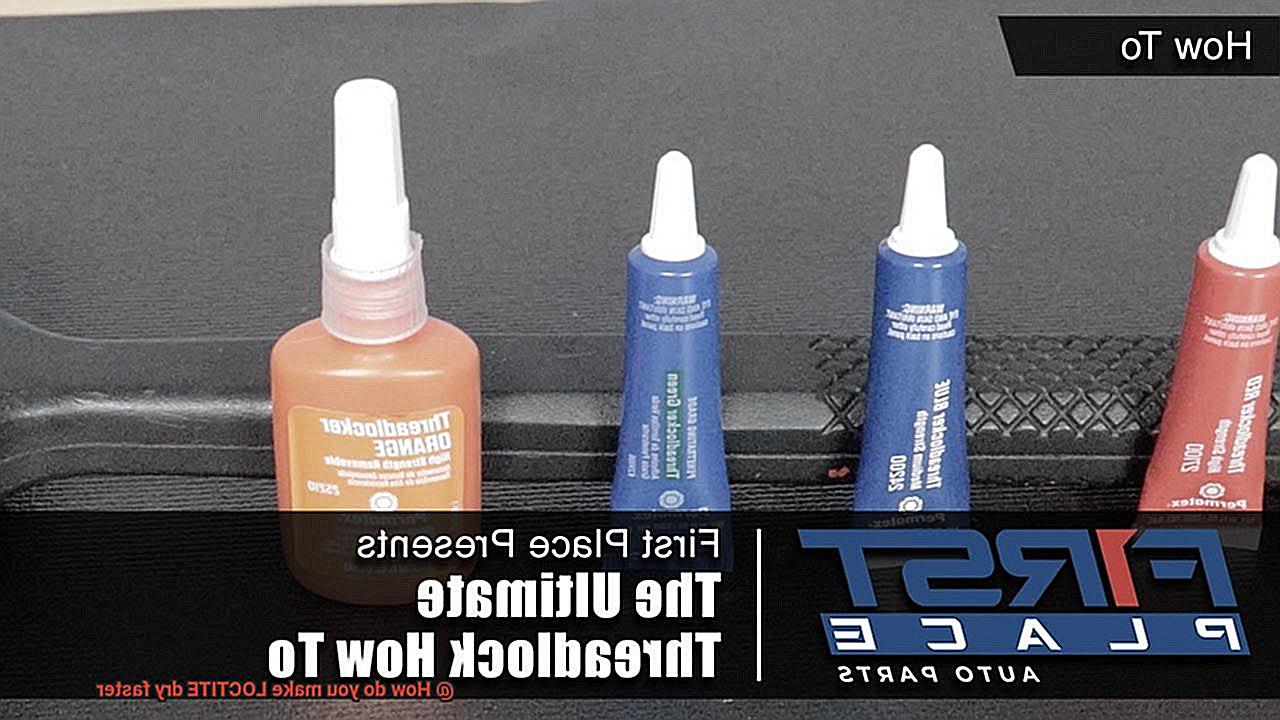
Safety Considerations:
While working with accelerators and activators, it is crucial to prioritize safety. Use these substances in well-ventilated areas to avoid inhaling any potential fumes. Wear protective gloves and goggles to shield yourself from irritation or eye damage. Additionally, select an accelerator or activator that is compatible with LOCTITE adhesives to ensure optimal performance.
Proper Surface Preparation for Faster Drying
Proper surface preparation is essential for achieving faster drying times when using LOCTITE adhesive. Before diving into the world of speedy bonding, it’s important to understand the key steps involved in preparing surfaces for optimal drying.
First and foremost, cleanliness is crucial. To ensure a strong bond and speedy drying, it is vital to clean the surfaces you’ll be bonding. Dust, dirt, grease, or oil can all interfere with the drying process and weaken the bond strength. Use a solvent or cleaner specifically designed for the material you’re working with. For metal surfaces, a degreaser will do the trick. Follow the manufacturer’s instructions and allow sufficient time for the solvent to evaporate.
Next up, roughen those surfaces. Lightly sand or abrade them with fine-grit sandpaper or a wire brush. This creates a slightly rough texture that enhances the mechanical adhesion of LOCTITE. Be careful not to go overboard and damage the material – we want a strong bond, not a broken one.
Temperature and humidity also play a significant role in drying time. Aim for temperatures within the range recommended by LOCTITE for optimal drying. Working in a well-ventilated area will help solvents and moisture evaporate more effectively.
Moisture is another factor to consider. Ensure that the surfaces are completely dry before applying LOCTITE. Even a hint of moisture can interfere with the curing process and prolong drying time. If necessary, use compressed air or a heat gun on low settings to banish any lingering moisture.
It’s important to note that different types of LOCTITE adhesives may have specific surface preparation requirements. Always refer to the product’s technical data sheet or consult an expert to ensure you’re following the correct procedures.
Reducing Humidity Levels for Quicker Drying
When it comes to using LOCTITE glue, achieving a quick and strong bond is crucial. However, many people overlook the impact that humidity levels can have on the drying time of adhesives. In this article, we will explore the importance of controlling humidity levels for faster drying with LOCTITE glue. We will also provide practical tips and methods to reduce humidity in your environment, ensuring you get the best results every time.
Why is humidity control important?
Humidity plays a significant role in the drying process of adhesives like LOCTITE glue. When the air is saturated with moisture, the evaporation process slows down, leading to longer drying times. By reducing humidity levels, you can speed up the drying process and achieve quicker bonding. This is especially critical in high-humidity areas like bathrooms or basements, where excessive moisture can wreak havoc on your adhesive.
Methods to reduce humidity:
- Dehumidifiers: These handy devices extract excess moisture from the air, creating a drier environment that promotes faster drying. Whether you opt for a portable dehumidifier or a whole-house system, choose one that suits your needs and place it near the area where you’re applying LOCTITE glue for maximum effectiveness.
- Improved ventilation: Proper airflow helps dissipate moisture and expedite the drying process. Open windows or use fans to enhance air circulation. If needed, utilize air conditioning or heating systems with dehumidifying capabilities for efficient control over indoor humidity.
- Extra measures for high-humidity areas: In spaces prone to high humidity, such as bathrooms or basements, consider installing exhaust fans or using portable fans to enhance ventilation further. These additional measures can help reduce humidity levels more effectively.
Combining methods for better results:
In some cases, a single method may not be sufficient to reduce humidity levels effectively. To achieve even better results, experiment with combining a dehumidifier and improved ventilation. Finding the right combination of methods for your specific situation may require some trial and error.
Consider other factors:
While controlling humidity is crucial, it’s important to consider other factors that can influence drying times. Temperature and substrate material are two key factors to keep in mind. Adhesives like LOCTITE glue often have recommended temperature ranges for optimal performance. Additionally, ensuring that your surfaces are clean, dry, and properly prepared will also contribute to faster drying times.

Choosing the Right Type of LOCTITE Adhesive
Selecting the perfect adhesive is paramount when it comes to bonding materials together. With a wide range of products, LOCTITE, a renowned brand in adhesive solutions, offers options for various applications. To make an informed decision, it is essential to understand the different types of LOCTITE adhesives available and their specific features.
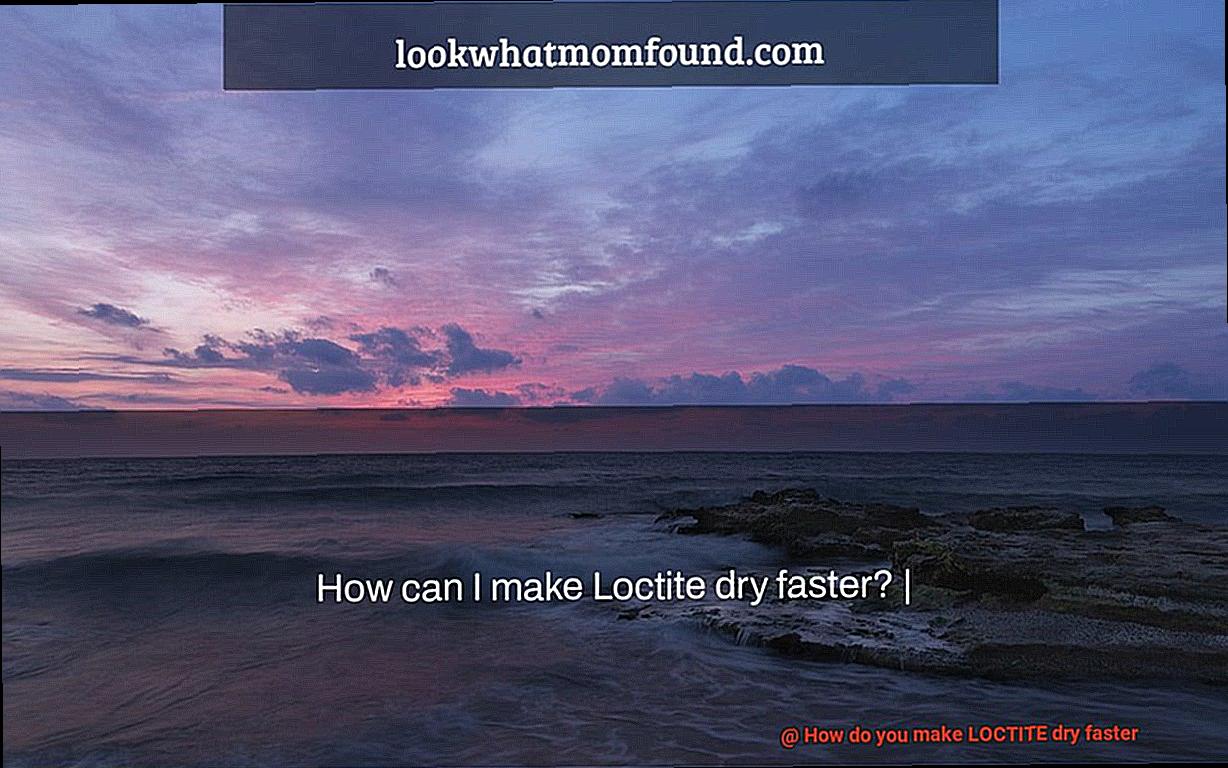
Let’s delve into the world of LOCTITE adhesives, starting with instant adhesives, also known as super glues. These adhesives provide rapid bonding and are perfect for small projects or quick fixes. If you’re looking to bond larger surfaces or dissimilar materials, structural adhesives are your go-to option. With high strength and durability, they ensure a secure bond.
Threadlockers are designed to prevent loosening or leakage in threaded assemblies, making them ideal for automotive or machinery applications. Gasket sealants offer reliable sealing properties for flanges or joints, ensuring a tight and leak-free connection. Lastly, retaining compounds secure cylindrical assemblies like bearings onto shafts, providing strength and stability.
Each type of LOCTITE adhesive possesses unique characteristics that set them apart. When selecting an adhesive, consider factors such as substrate material, temperature resistance, flexibility, and cure time.
Substrate material compatibility is crucial in adhesive selection. Different adhesives bond effectively with materials like metal, plastic, rubber, or wood. Choose an adhesive that suits your specific substrate to ensure optimal performance.
Temperature resistance is another vital consideration. Some LOCTITE adhesives can withstand high temperatures, making them suitable for applications where heat resistance is necessary. Others are more suitable for low-temperature environments.
Flexibility plays a significant role when bonding materials that experience movement or vibrations. If your project involves flexible parts or materials that need to flex during use, selecting an adhesive with good flexibility will prevent cracks or failures.
Cure time refers to the length of time required for an adhesive to fully harden. Some projects may require a quick cure time, while others can tolerate longer drying periods. Align the adhesive’s cure time with your project’s timeline.
To better understand the importance of choosing the right LOCTITE adhesive, let’s look at some examples. Repairing a broken ceramic mug? An instant adhesive would be ideal due to its fast bonding capabilities. Bonding metal brackets together? Opt for a structural adhesive to ensure strength and durability. Securing bolts in automotive or machinery applications? Threadlockers will prevent them from loosening due to vibrations.
LOCTITE provides a product selection guide and technical data sheets to assist in selecting the appropriate adhesive. These resources offer comprehensive information on each adhesive’s specifications, helping you make an informed decision.
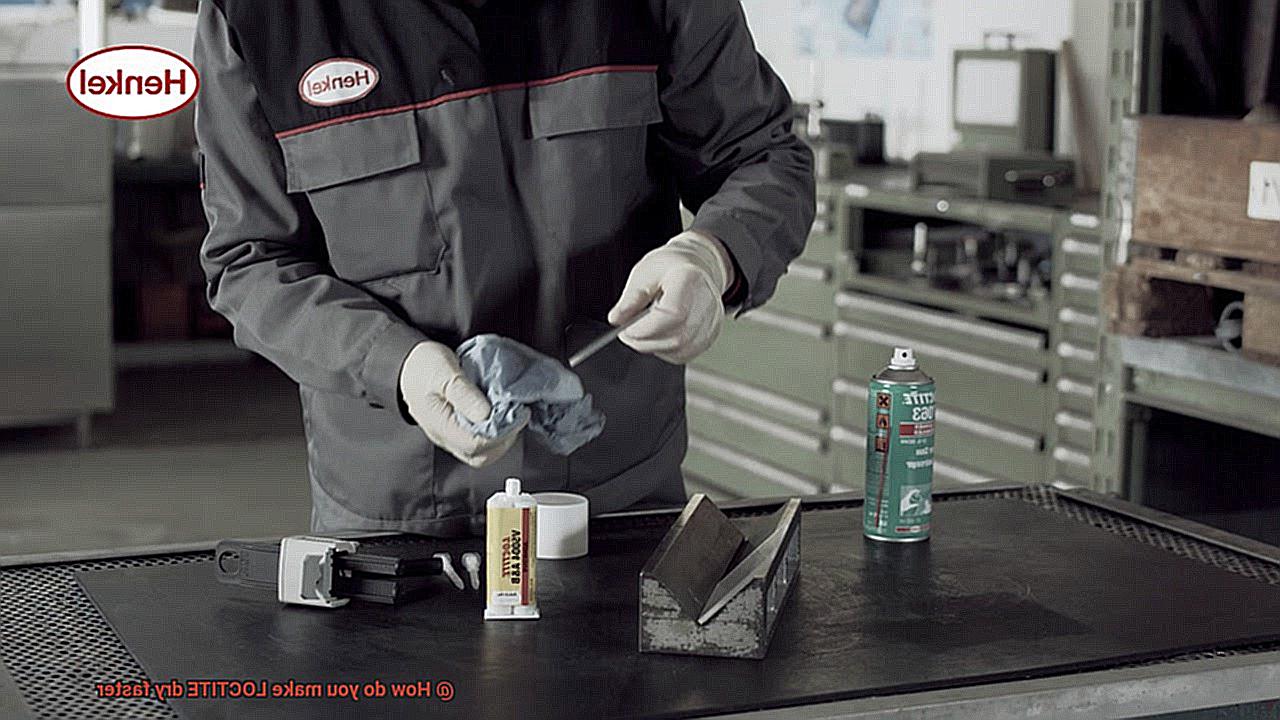
Tips and Tricks for Speeding Up the Drying Time of LOCTITE
We’ve got you covered. In this blog post, we will share some tips and tricks to help speed up the drying time of LOCTITE adhesives. Whether you’re working on a craft project or fixing something around the house, these techniques will save you valuable time and get the job done faster.
Apply a Thin Layer:
When using LOCTITE, it’s important to apply a thin layer of adhesive. Thicker layers take longer to dry because the solvent needs more time to evaporate. By using a thin and even layer of glue, the solvent can evaporate more quickly, resulting in a faster drying time.
Increase Temperature and Airflow:
Heat helps to speed up the evaporation process. You can place your glued object in a warm room or use a heat gun on a low setting to expedite drying. Additionally, improving airflow by using a fan or opening windows will help disperse moisture and promote quicker drying.
Use Accelerator Products:
Accelerators are specially designed to speed up the drying time of adhesives like LOCTITE. They react with the glue, causing it to cure faster. Simply apply the accelerator to one surface before applying LOCTITE, then join the surfaces together for a stronger bond in less time.
Avoid Excessive Humidity:
High humidity levels can significantly prolong drying time. Moisture in the air slows down evaporation and prevents proper curing. To avoid this, work in a dry environment and use dehumidifiers or air conditioning if necessary.
Consider Using UV Light:
Some LOCTITE adhesives are formulated to cure under UV light. By exposing them to ultraviolet light from lamps or natural sunlight, you can drastically reduce drying time. Remember to check if your adhesive is compatible with UV curing before attempting this method.
Allow Sufficient Curing Time:
While these tips can speed up drying time, it’s essential to allow sufficient curing time for the adhesive to reach its maximum strength. Even if the glue appears dry, it may still be curing internally. Follow the recommended curing time provided by LOCTITE for optimal results.
Conclusion
When it comes to making LOCTITE dry faster, there are a few tips and tricks that can help speed up the process. One method is to apply heat to the area where the adhesive has been applied. This can be done using a hair dryer or a heat gun set on low heat. The warmth will help accelerate the curing process of the LOCTITE, allowing it to dry more quickly.
Another technique is to increase the airflow around the adhesive. By using a fan or opening windows, you can create better ventilation, which will aid in drying out the LOCTITE faster. The increased air circulation helps evaporate any moisture present in the adhesive, expediting the drying time.
Additionally, using thinner layers of LOCTITE can also promote faster drying. Applying a thin coat ensures that there is less material for moisture to penetrate and slows down the curing process. Thinner layers dry quicker as they have less mass to solidify.
Furthermore, choosing the right type of LOCTITE for your specific application can make a difference in drying time. Some variants of LOCTITE are designed for rapid curing, meaning they dry much faster than standard formulas. These fast-drying options are ideal when time is of the essence and you need your project completed quickly.
In conclusion, if you want to make LOCTITE dry faster, consider applying heat, increasing airflow, using thinner layers, and selecting fast-drying variants specifically designed for rapid curing.

